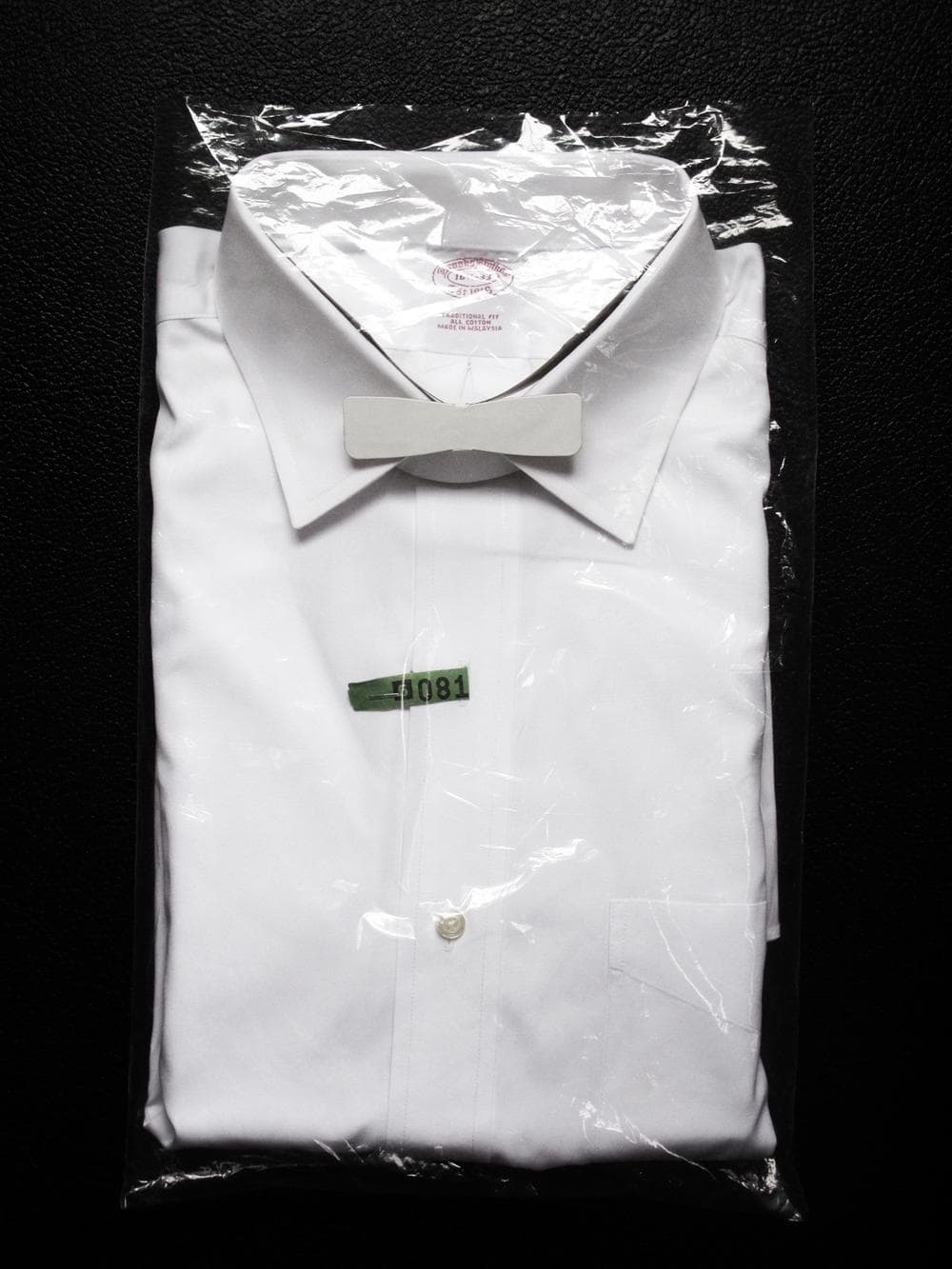Advertisement
The One In The White Shirt
Starting in my early teens, I sought to define who I was by what I wore. This translated to an ever-evolving wardrobe of trendy pieces combined with quirky items found at secondhand stores and offbeat boutiques or by “shopping” my mother’s closet. I mixed and matched and layered in seemingly unending configurations.
This need to “be me” became apparent when in ninth grade, taking my cue from the leaders of the in-crowd – Nancy, Janet, and Bobbie – I scrimped and saved to buy a Fair Isle crewneck sweater and an A-line tweed wool skirt.
Wearing my new clothes for the first time on a preternaturally warm October day, I paraded into Randolph High School scanning the assembly hall until I spotted the three flaxen-haired maidens. Scampering over to where they stood, I found them surrounded by no fewer than two-dozen similarly attired admirers. Taking stock of the assembled group it was clear: this uniform didn’t suit me. My dark hair and full lips no match for these golden girls; their athletic bodies in sharp contrast to my curves.

For the next 20 years, I used clothing to telegraph my psyche. Defined by whim, obligation, finance, and a shifting body image, I spent an inordinate amount of time thinking about my clothes. There were some days when my outfits practically screamed, “look at me.” Other days all I craved was a knowing look from a stranger passing me on the street.
It wasn’t until my early forties, as a working mother with two young children, that I considered simplifying my wardrobe. Sure, I still wanted to insure the symbolism of my style, but after having had an adverse reaction to homogeny in high school, I reconsidered the possibilities and benefits of a uniform.
By definition, uniforms are meant to be typical — classic, functional, and neither too original nor too clever. Uniforms are the great equalizer — at school, during camp, on the playing field.
Uniforms convey expectations — think Shirley Booth in “Hazel” or Edie Falco in “Nurse Jackie.” And, contrary to my ninth grade opinion of them, uniforms, when worn by a lot of people simultaneously, have a certain je ne sais quoi.
Sailors, nuns, policemen, football players, and groups of well-dressed ninth graders look great in a group. The patterned sweaters and tweed skirts that Nancy, Janet, Bobbie and the rest of the clique chose to wear belied their small-town, working-class family histories. Though theirs was a team I didn’t necessarily want to join, like me, they were trying to define themselves. While I found comfort in standing out, they took solace in looking like one another.
Advertisement
Now, twice a year, I make a pilgrimage to Brooks Brothers, that temple of tasteful dress, to purchase the key piece of clothing in my wardrobe that, over the years, has become my own uniform: an oversized men's shirt — size 16 ½ x 33, all cotton, preferably broadcloth, never no-iron, straight collar, French placket, always, and only, in white.
Ironically, the iconic white shirt is more distinctive than any of my more esoteric ensembles.
I wear the freshly laundered shirts over slim black leggings, add an extravagant necklace and velvet slippers for fancy dinners, a stack of bracelets and a pair of boots for the office, and the day before the shirt is ready for the dry cleaners, sneakers for the gym.
Where most people might be described by some physical attribute — the one with the red hair, the brown eyes, the aquiline nose – I am the one in the white shirt.
By minimizing my clothing choices, the white shirt keeps me on time, free of pre-party-what-to-wear-anxiety, and, offers little chance that I’ll be wearing the same thing as someone else. Ironically, the iconic white shirt is more distinctive than any of my more esoteric ensembles.
For a while I worried if the idea of a “unique uniform” was an oxymoron. Or worse, had I grown lazy about my dress? Had I given up or given in? Had I become one of the crowd? But recently I’ve noticed that my Brooks Brothers shirt has encouraged a few converts. And as flattered as I am, this fact suggests that it may be time to change the paradigm. Though I always have a starched shirt in reserve, I’ve started to mix things up a bit. That’s the thing with clothing, like the rest of life, what you want from it changes.
This program aired on October 31, 2012. The audio for this program is not available.